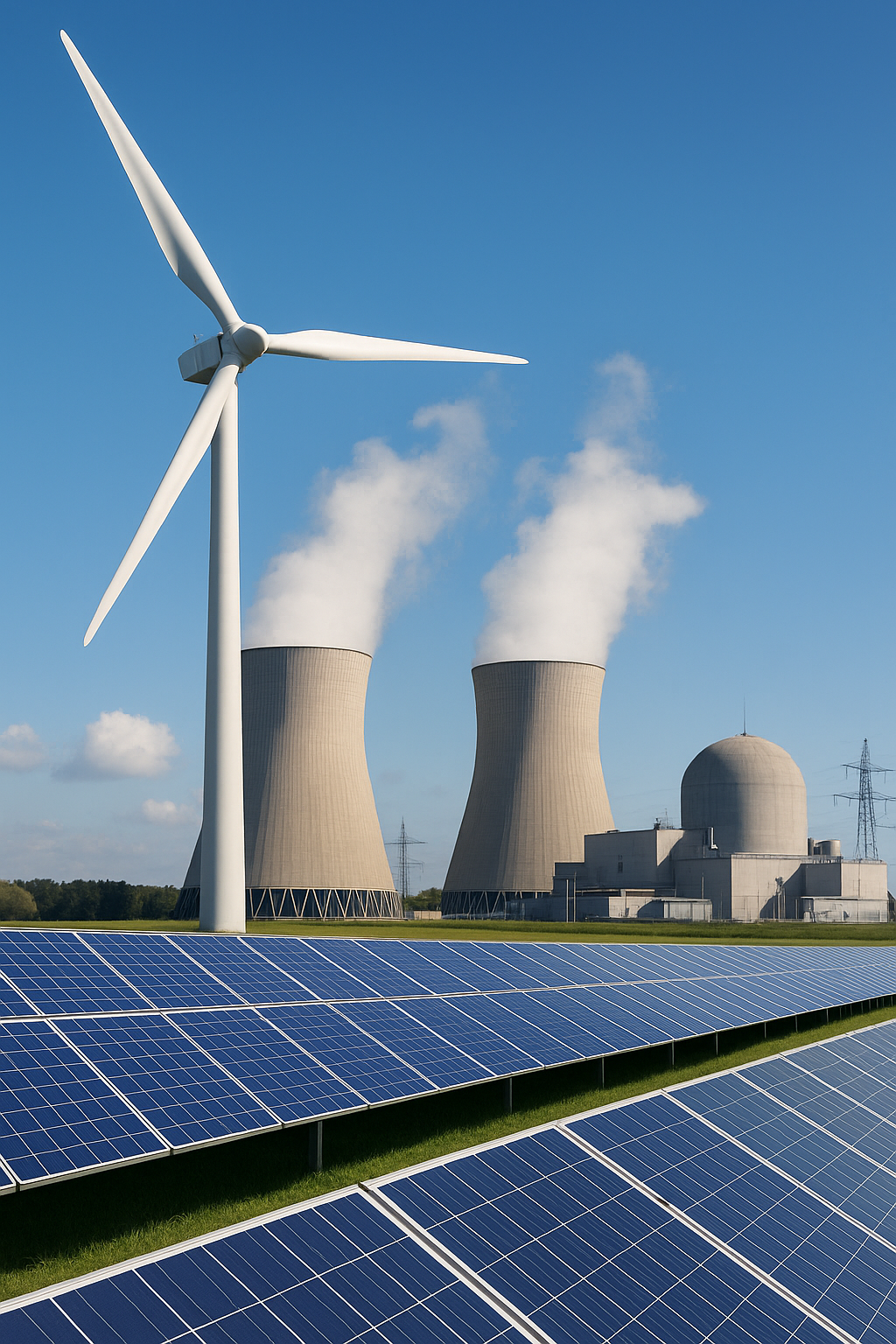Nuclear and wind power drive long-term economic Growth in BRICS nations
The short-run results reveal stark differences between countries and energy types. Hydropower, often seen as a traditional renewable mainstay, emerged as a short-term growth driver in Brazil but showed negative effects in Russia, India, and China, and no significant influence in South Africa. Nuclear energy’s short-run performance was more consistently positive, benefiting Brazil, Russia, and South Africa when output increased, though in some cases, negative shocks hurt growth, particularly in Brazil and China.

A new analysis reveals that nuclear and wind energy are the most reliable long-term contributors to economic growth in BRICS nations, while other renewable sources show inconsistent or even negative impacts. The findings, published in Energies and titled "The Impact of the Renewable Energy Transition on Economic Growth in BRICS Nations," provide one of the most detailed assessments yet of how different renewable sources affect major emerging economies in both the short and long run.
The research examined Brazil, Russia, India, China, and South Africa from 1990 to 2023, applying a Panel Nonlinear Autoregressive Distributed Lag (PNARDL) model to capture asymmetric effects and dynamic relationships between energy sources and economic performance. Supplementary tests using Dynamic Ordinary Least Squares (DOLS) and Fully Modified Ordinary Least Squares (FMOLS) reinforced the main conclusions. By analysing hydro, wind, nuclear, and other renewable energy sources alongside trade openness and capital formation, the study offers targeted insights for energy transition policies in countries that together account for over 40% of the world’s population and a substantial share of global GDP.
How energy sources affect growth differently across BRICS
The short-run results reveal stark differences between countries and energy types. Hydropower, often seen as a traditional renewable mainstay, emerged as a short-term growth driver in Brazil but showed negative effects in Russia, India, and China, and no significant influence in South Africa. Nuclear energy’s short-run performance was more consistently positive, benefiting Brazil, Russia, and South Africa when output increased, though in some cases, negative shocks hurt growth, particularly in Brazil and China.
Wind energy showed positive short-run impacts in India, China, and South Africa, but reduced growth in Brazil, where both positive and negative shocks proved detrimental. Other renewables, which include sources such as biomass, supported growth in Brazil and India but weakened economic output in China.
Capital investment, included as a control variable, demonstrated its importance in Brazil’s short-run growth but had a dampening effect in India and China during the same period. Trade openness produced mixed outcomes, boosting growth in China and South Africa following positive shocks, but harming Brazil and Russia under the same conditions. The asymmetry in these effects underscores that the direction of change matters: positive and negative shifts in the same variable can yield substantially different economic outcomes.
Long-term patterns and reliable growth drivers
In the long run, the results simplify into clearer policy signals. Across the BRICS bloc, only nuclear and wind energy maintain statistically significant, positive relationships with economic growth. Hydropower, other renewables, and trade openness lose significance when extended over decades, suggesting that their contributions are either inconsistent or dependent on other economic and policy conditions.
Capital formation stands out as a consistent long-term growth enhancer, reinforcing the need for sustained investment in infrastructure and production capacity alongside the energy transition. The robustness checks using FMOLS confirmed nuclear power and capital as enduring positive influences, while also indicating that, over the full period, hydro, wind, and other renewables may, in some cases, correlate negatively with growth when controlling for long-term dynamics.
The study’s asymmetry tests further reveal that hydropower, nuclear energy, trade openness, and capital exhibit significant differences between the effects of positive and negative shocks. This means that the policy environment must not only focus on expansion but also plan for the economic consequences of contraction or supply disruptions in these sectors.
Policy implications for a balanced energy transition
The authors argue that BRICS policymakers should treat nuclear and wind energy as cornerstones of their long-term energy strategies, given their strong and sustained links to economic growth. However, they caution that the heterogeneous short-run effects of hydro, wind, and other renewables require tailored, country-specific policies. What benefits one BRICS member in the near term may hinder another, and these differences must inform investment and regulatory decisions.
For instance, Brazil’s heavy reliance on hydropower aligns with short-term gains but may not deliver the same benefits in other BRICS economies. Similarly, wind energy’s mixed short-term performance highlights the importance of infrastructure readiness, grid integration, and market conditions. The study also points to the necessity of maintaining high levels of capital investment, as this factor consistently supports growth regardless of energy source.
Trade openness emerges as a double-edged sword. While it can enhance growth in some contexts, it may undermine it in others, particularly if the benefits of trade are offset by vulnerabilities in energy supply chains. Policymakers must therefore evaluate trade policy in conjunction with energy sector planning.
The research links its findings to broader sustainability targets, noting that aligning renewable energy adoption with economic growth is essential for achieving Sustainable Development Goals 7 (Affordable and Clean Energy), 8 (Decent Work and Economic Growth), and 13 (Climate Action). The authors emphasize that simply expanding renewable energy capacity is not enough; the composition of that capacity and its interaction with macroeconomic conditions are critical to ensuring both economic and environmental objectives are met.
- FIRST PUBLISHED IN:
- Devdiscourse










